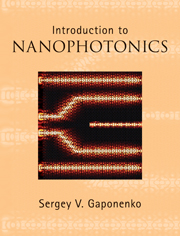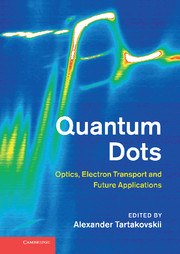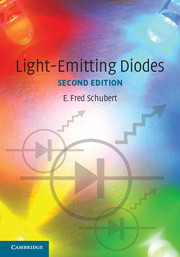Principles of Nano-Optics
First published in 2006, this book has become the standard reference on nano-optics. Now in its second edition, the text has been thoroughly updated to take into account new developments and research directions. While the overall structure and pedagogical style of the book remain unchanged, all existing chapters have been expanded and a new chapter has been added. Adopting a broad perspective, the authors provide a detailed overview of the theoretical and experimental concepts that are needed to understand and work in nano-optics, across subfields ranging from quantum optics to biophysics. New topics of discussion include: optical antennas; new imaging techniques; Fano interference and strong coupling; reciprocity; metamaterials; and cavity optomechanics. With numerous end-of-chapter problem sets and illustrative material to expand on ideas discussed in the main text, this is an ideal textbook for graduate students entering the field. It is also a valuable reference for researchers and course teachers.
- Pedagogical and introductory overview of the optical phenomena and techniques encountered in nanoscience and nanotechnology
- Adopts a broad perspective, teaching the elements of nano-optics encountered in a variety of subfields, ranging from quantum optics to biophysics
- Supplemented with numerous homework problems and illustrations
Reviews & endorsements
'The reader will appreciate its scope and depth, as it covers topics ranging from resolution and microscopy to metamaterials and optical antennas. This book provides an integrated approach to the entire field, and the format breaks the material into accessible sub-units. The physical and mathematical rigor is high, and approximations and limitations of the theory and the experimental devices are clearly stated. The material is highly recommended for a graduate course.' Barry R. Masters, Optics and Photonics News
'This text responds to the growing importance of nanoscience, and presents a rare collection of topics across optics and microscopy at the nanoscale. A major goal of nano-optics is to extend the use of optical techniques to length scales beyond the diffraction limit. Notably, the book features a valuable discussion of resolution, localization and position accuracy in microscopy. A non-exhaustive list of subjects covered in later chapters includes near- and far-field microscopy techniques, quantum emitters and surface plasmons in nanostructures.' Lukas Novotny and Bert Hecht, 'All-Time Favourites', Nature Photonics
Product details
September 2012Hardback
9781107005464
578 pages
252 × 192 × 27 mm
1.39kg
200 b/w illus. 5 tables 100 exercises
Available
Table of Contents
- Preface
- 1. Introduction
- 2. Theoretical foundations
- 3. Propagation and focusing of optical fields
- 4. Resolution and localization
- 5. Nanoscale optical microscopy
- 6. Near-field optical probes
- 7. Probe-sample distance control
- 8. Optical interactions
- 9. Quantum emitters
- 10. Dipole emission near planar interfaces
- 11. Photonic crystals, resonators, and cavity optomechanics
- 12. Surface plasmons
- 13. Optical antennas
- 14. Forces in confined fields
- 15. Fluctuation-induced interactions
- 16. Theoretical methods in nano-optics
- Appendices
- Index.






